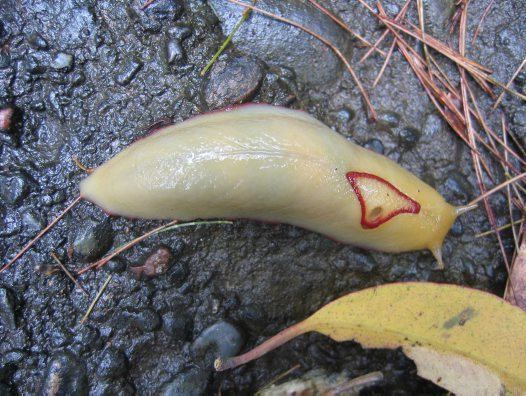 | ||
Similar Red slug, Elasmognatha, Bielzia coerulans, Limax maximus, Pondoland cannibal snail | ||
Red triangle slugs the way i have them set up and basic care
The red triangle slug, scientific name Triboniophorus graeffei, is a species of large air-breathing land slug, a terrestrial pulmonate gastropod mollusk in the family Athoracophoridae, the leaf-veined slugs.
Contents
- Red triangle slugs the way i have them set up and basic care
- Red triangle slug
- Distribution
- Habitat
- Life habits
- Description
- Gallery
- References

This large (up to 15 cm), often colorful and striking-looking species is found in eastern Australia. It is Australia's largest native land slug. It is a common part of the fauna.
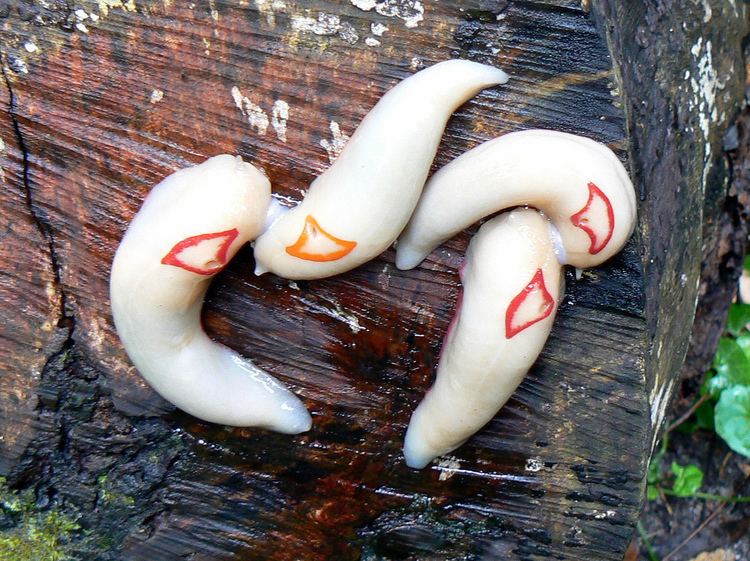
Triboniophorus graeffei is the type species of the genus Triboniophorus. A closely related species is the as-yet-unnamed Triboniophorus aff. graeffei.
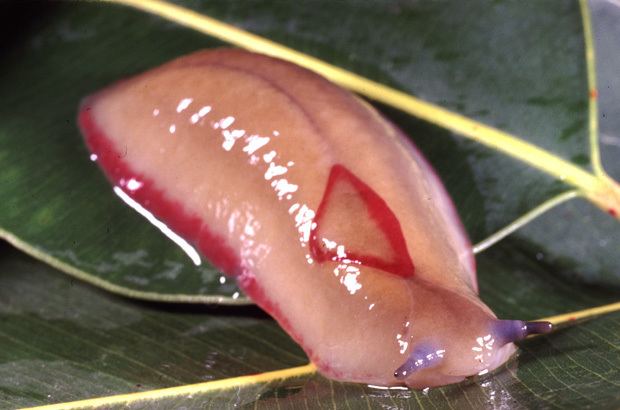
Red triangle slug
Distribution
This slug species occurs on the east coast of Australia, from New South Wales to Queensland.
A bright pink variation, Triboniophorus aff. graeffei, are found exclusively on Mount Kaputar.
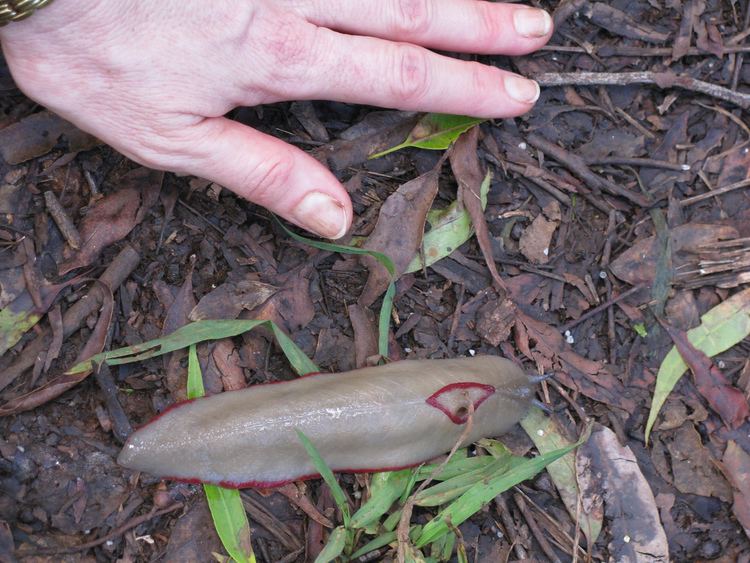
Solem (1959) mentioned a possible introduction of this species to the New Hebrides, but no material was available to confirm it.
Habitat
Red triangle slugs are found in damp situations in various habitats, including city gardens, forests, woodland and heaths.
Life habits

These slugs graze on algae which grows on the surface of the smooth bark of some eucalyptus trees and on rocks. Sometimes the slugs enter houses and have been known to graze on the mold that grows on bathroom walls.
Description
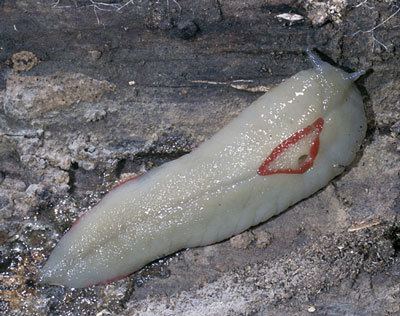
These slugs have two, not four, tentacles, and like other leaf-vein slugs, they have an indented pattern on their dorsum which resembles that of a leaf. The body length is up to 14 cm.
They are very variable in color. Individual slugs can be white, off-white, yellow, dark or light grey, beige, pink, red, or olive green. Each of the color forms have a red (possibly orange, magenta, or maroon) triangle on the mantle surrounding the pneumostome, and a red line at the edge of the foot. The texture of the dorsum of the slug can be smooth or very rough.
Juveniles lack the typical red foot border and red triangle of the adults but have three dark grey stripes running down the dorsal surface of their body and have the triangular mantle shield outlined with grey.
Research is currently being carried out in an attempt to determine if some of the different colourations may actually represent different species or subspecies.
Gallery
Various shots of Triboniophorus graeffei on the bark of Sydney Blue Gums, near Dungog, Australia, showing color variation, varying degrees of contraction and body shape.
